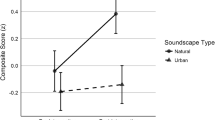Abstract
The article describes a novel method of rhythm-suggestive compensation (RSC) for autonomous psychological support of crews, which takes into account the brain regulatory mechanisms of psychological defense. This method integrates several ways of optimization, such as rhythmic stimulation, binaural drumming, and verbal suggestion. The techniques of RSC are individually specific, taking into account the current features of the functional interaction between the brain’s hemispheres, the personal reaction to suggestive information, and individual psychological defense. Semantic suggestive patterns are modulated according to a certain algorithm and combined with rhythmic sensory stimulation. Therefore, controlled changes in the activities of the brain’s hemispheres and different regions of the brain are combined with an efficacious form of suggestion. The efficiency of RSC was evaluated in two groups of five combatants. The subjects of the first group received compensatory procedures that consisted of a simple combination of rhythmic audiovisual stimulation and verbal suggestion. The efficiency of the procedures was evaluated using the technique for the measurement of brain potentials evoked by emotionally engaging images. The subjects of the second group were treated using the RSC procedure. The RSC showed greater efficiency than rhythmic audiovisual stimulation. It was shown that regular repetition of rhythm-suggestive procedures enables us to optimize the mental state of subjects and form a stable mental set.
Similar content being viewed by others
References
Bragina, N.N. and Dobrokhotova, T.A., Funktsional’nye asimmetrii cheloveka (Functional Asymmetries in Humans), Moscow, 1981.
Bubeev, Yu.A., Kvasovets, S.V., and Ivanov, A.V., Modern instrumental means of psychodiagnostics and correction of stress-related disorders, in Aktual’nye problemy integral’noi meditsiny (Current Problems of Integrative Medicine), Moscow, 2001, p. 182.
Bubeev, Yu.A., Ushakov, I.B., Kvasovets, S.V., et al., Subconscious components of psychophysiological responses in the participants of a 105-day experiment in an isolated environment, Aviakosm. Ekol. Med., 2010, vol. 44, no. 4, p. 11.
Kvasovets, S.V. and Ivanov, A.V., Perception of unconscious information: A neuropsychological aspect, in A.R. Luriya i psikhologiya XXI veka (A.R. Luria and Psychology of the 21st Century (Abstr. Conf.), Moscow, 2002, p. 211.
Kvasovets, S.V. and Ivanov, A.V., Subthreshold/subliminal perception of verbal stimuli and psychosemantics: elaboration of the method, Psikhol. Zh., 2001, no. 5, p. 86.
Kvasovets, S.V., Ivanov, A.V., and Bubeev, Yu.A., Analysis of subliminal perception of verbal stimuli as an instrument of psychological diagnostics, Psikhol. Zh., 2002, no. 3, p. 82.
Kvasovets, S.V., Ivanov, A.V., and Kurchakova, M.S., Reflection of the affectivity of images in the parameters of evoked potentials, Psikhol. Zh., 2007, vol. 28, no. 3, p. 84.
Konovalov, V.F., Serikov, I.S., and Fedotchev, A.I., The effect of different frequencies of photostimulation on the dynamics of inter-hemispheric interactions, Fiziol. Chel., 1987, vol. 13, no. 1, p. 3.
Kurchakova M.S., Psychophysiological mechanisms of emotional reactions in the healthy and in patients with psychic injuries, Extended Abstract of Cand. Sci. (Psychol.) Dissertation, Moscow: 2008.
Romanova, E.S., Psikhodiagnostika (Psychodyagnostics), St. Petersburg, 2006.
Fedotchev, A.I., Bondar’, A.T., Maevskii, A.A., and Zuimach, E.A., Physiologic effects of photic stimulation and their relationship with subjective functional state characteristics, Fiziol. Chel., 1995, vol. 21, no. 3, p. 5.
Khomskaya, E.D. and Batova, N.Ya., Mozg i emotsii (Brain and Emotions), Moscow, 1998.
Khomskaya, E.D., Efimova, N.V., Budyka, E.V., and Enikolopova, E.V., Neiropsikhologiya individual’nykh razlichii (Neuropsychology of Individual Differences), Moscow, 1997.
Blackhart, G.C. and Kline, J.P., Individual differences in anterior EEG asymmetry between high and low defensive individuals during a rumination/distraction task, Person. Ind. Diff., 2005, vol. 39, p. 427.
Kline, J.P., Blackhart, G.C., and Joiner, T.E., Sex, lie scales, and electrode caps: an interpersonal context for defensiveness and anterior electroencephalographic asymmetry, Person. Ind. Diff., 2002, vol. 33, p. 459.
Author information
Authors and Affiliations
Additional information
Original Russian Text © A.V. Ivanov, S.V. Kvasovets, I.B. Ushakov, Yu.A. Bubeev, 2011, published in Aviakosmicheskaya i Ekologicheskaya Meditsina, 2011, Vol. 45, No. 5, pp. 11–18.
Rights and permissions
About this article
Cite this article
Ivanov, A.V., Kvasovets, S.V., Ushakov, I.B. et al. Rhythm-suggestive compensation and unconscious regulatory mechanisms. Hum Physiol 39, 716–722 (2013). https://doi.org/10.1134/S0362119713070086
Received:
Published:
Issue Date:
DOI: https://doi.org/10.1134/S0362119713070086




